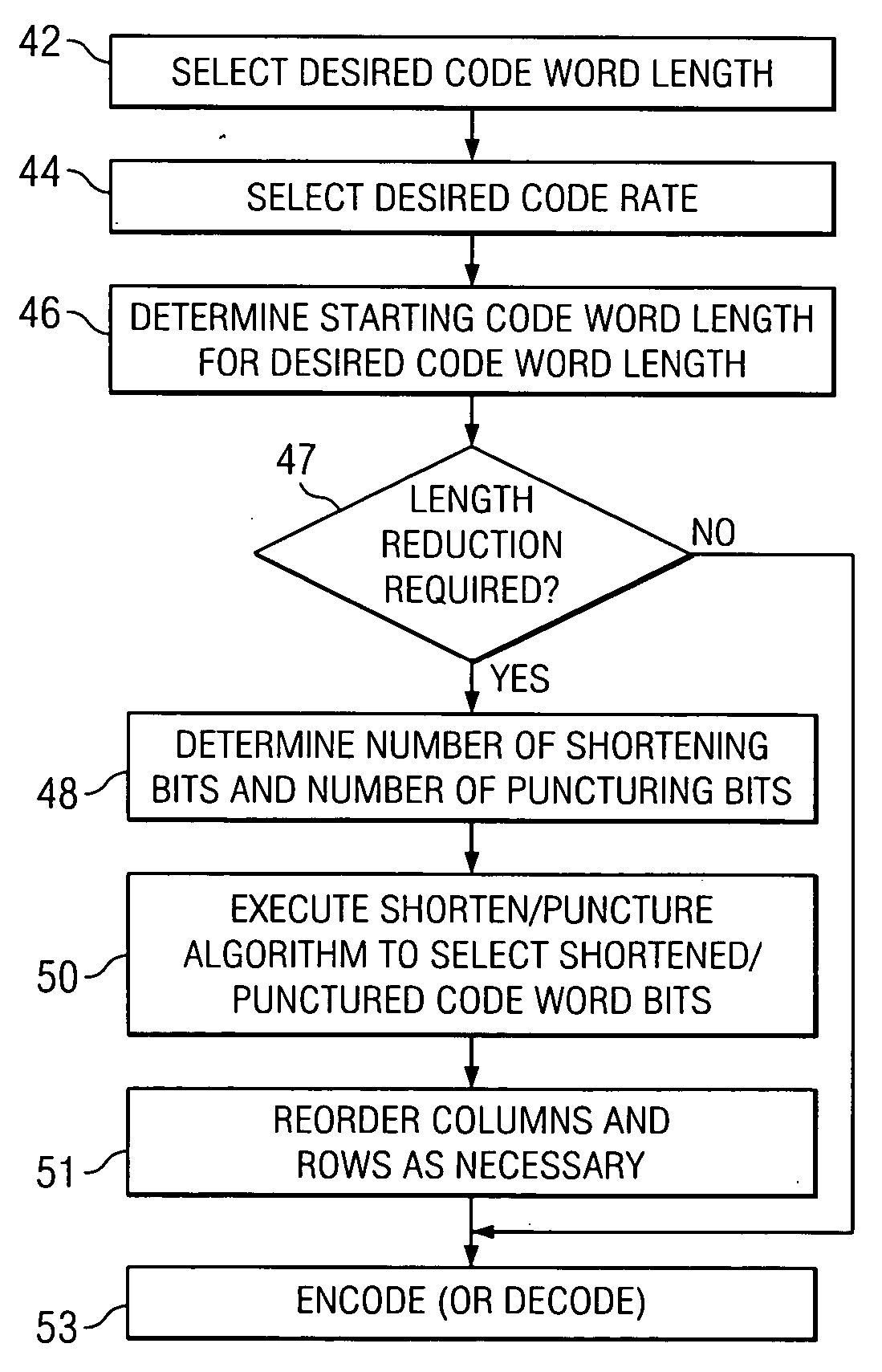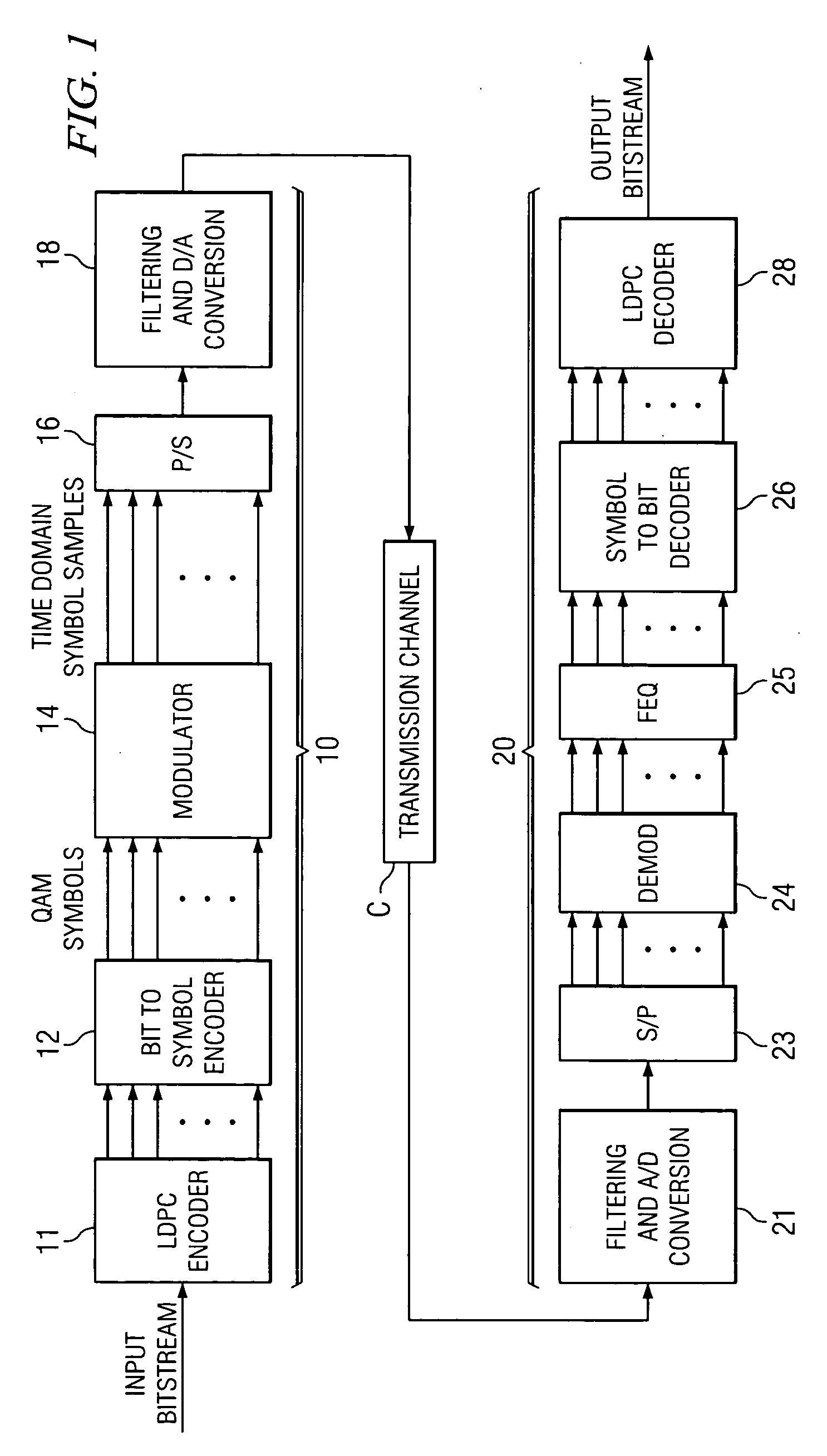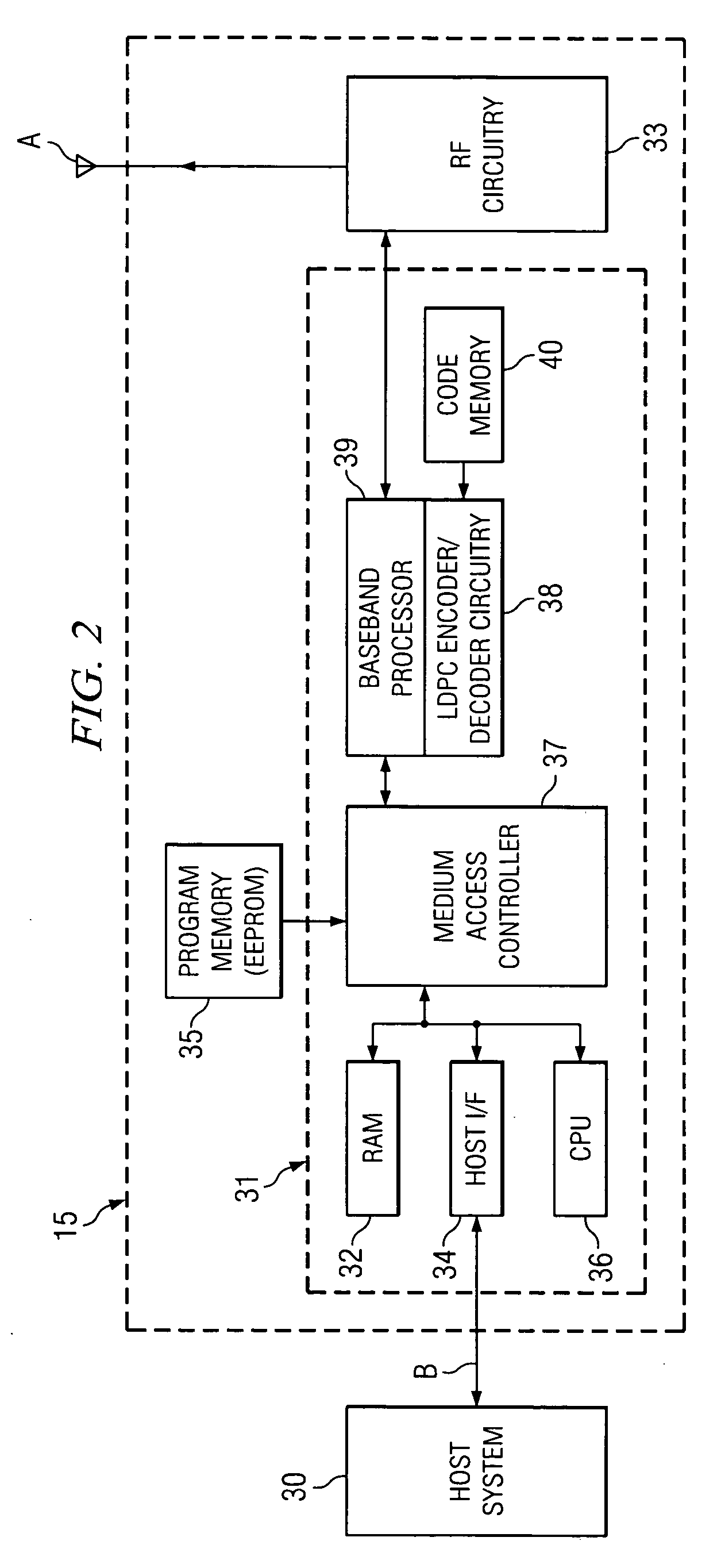Simplified decoding using structured and punctured LDPC codes
a structured and punctured coding technology, applied in the field of data communication, can solve the problems of not necessarily correcting every error, ignoring data communication, and ignoring data communication by noise, so as to achieve excellent performance and avoid shortening the same code word bi
- Summary
- Abstract
- Description
- Claims
- Application Information
AI Technical Summary
Benefits of technology
Problems solved by technology
Method used
Image
Examples
Embodiment Construction
[0031] The present invention will be described in connection with an example of its implementation in an exemplary transceiver, for example a wireless broadband network adapter such as according to the IEEE 802.16 wireless broadband standards. It will be apparent to those skilled in the art having reference to this specification that this invention is particularly well-suited for use in such an application. However, it is also contemplated that this invention will be of similar benefit in many other applications that involve error correction coding, including other types of communications and different media, including other wireless communications such as wireless telephony, and wireless Local Area Network (LAN) communications, such as contemplated according to the IEEE 802.11 a / b / g / n standards; this invention is also contemplated to be beneficial for error correction coding in wired data communications such as involved in conventional Digital Subscriber Line (DSL) broadband commun...
PUM
 Login to View More
Login to View More Abstract
Description
Claims
Application Information
 Login to View More
Login to View More - R&D
- Intellectual Property
- Life Sciences
- Materials
- Tech Scout
- Unparalleled Data Quality
- Higher Quality Content
- 60% Fewer Hallucinations
Browse by: Latest US Patents, China's latest patents, Technical Efficacy Thesaurus, Application Domain, Technology Topic, Popular Technical Reports.
© 2025 PatSnap. All rights reserved.Legal|Privacy policy|Modern Slavery Act Transparency Statement|Sitemap|About US| Contact US: help@patsnap.com



